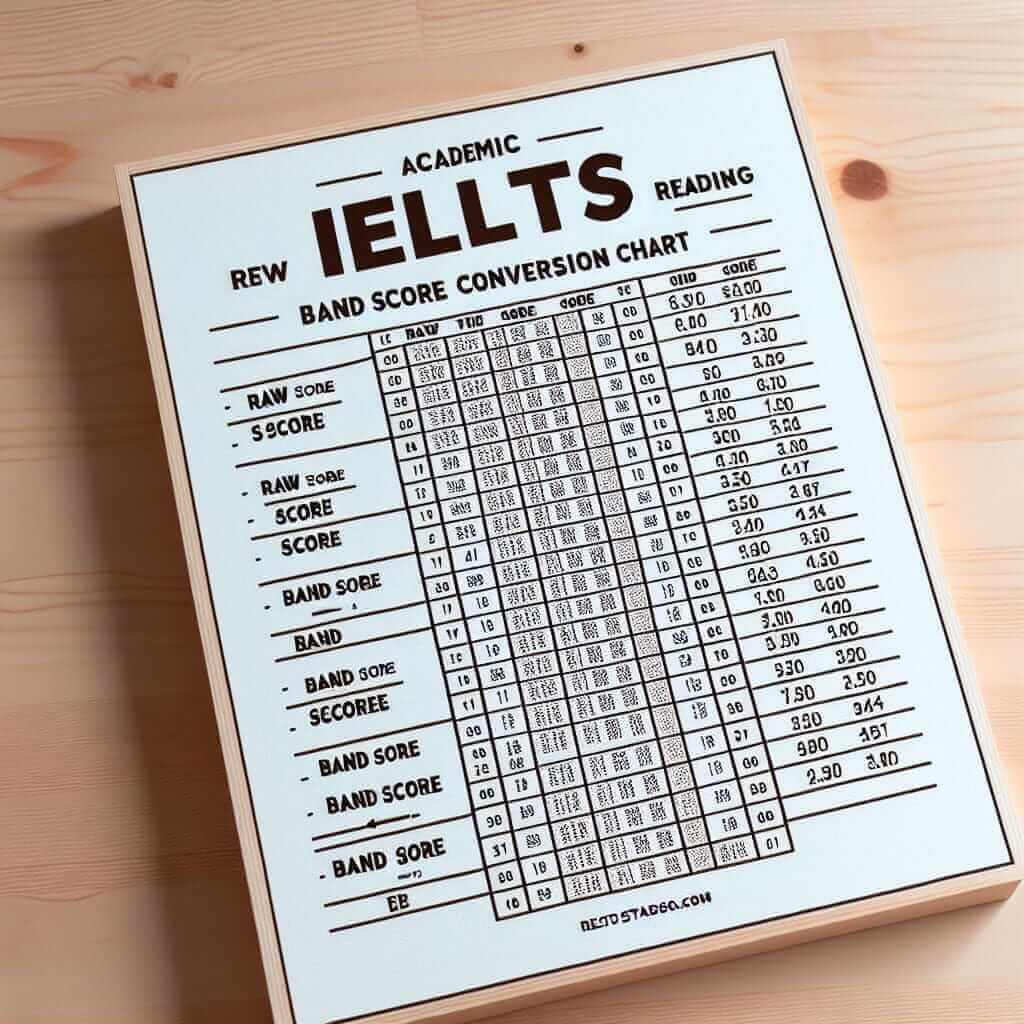As an aspiring IELTS test-taker, you’ve likely come across the term “band score.” This score, ranging from 0 to 9, reflects your proficiency in English. In the IELTS Reading test, your raw score (the number of correct answers) is converted into this band score. But how does this conversion happen? This is where the concept of an “IELTS Reading Band Score Calculator” comes into play.
While there isn’t a magical, official calculator that reveals your exact band score, there are band score conversion tables provided by IELTS organizations like the British Council and IDP. These tables give you a range or estimation of your band score based on your raw score.
Deciphering the Conversion Tables
These conversion tables aren’t uniform across all IELTS tests. The target band score range for a specific raw score can fluctuate depending on the difficulty of the test version.
Let’s illustrate with an example:
- Test Version A: Achieving a raw score of 30 might equate to a band score of 7.0.
- Test Version B: The same raw score of 30 might only correspond to a band score of 6.5.
This variation stems from the fact that IELTS tests are meticulously pre-tested to ensure consistent standards across different administrations.
Why Understanding the Calculator Matters
While you can’t pinpoint your exact score before receiving your official results, understanding how this “calculator” functions is crucial for several reasons:
-
Realistic Goal Setting: By familiarizing yourself with the conversion tables, you gain a realistic understanding of the raw score needed to achieve your target band score.
-
Strategic Preparation: Knowing how many correct answers translate to your desired score allows you to strategize your study plan and time management during the test.
-
Performance Evaluation: After taking a practice test, using the conversion table helps you gauge your progress and pinpoint areas needing further improvement.

Common Misconceptions
It’s crucial to dispel a common myth: There is no fixed formula or online tool that can definitively calculate your IELTS Reading band score. Be wary of websites or individuals claiming to offer such services. Your official band score is solely determined by IELTS examiners based on your performance on the test day.
Tips for Maximizing Your Score
Instead of relying on an elusive calculator, focus on what you can control – your performance:
-
Practice Consistently: Regularly engage with diverse IELTS Reading passages to enhance your reading comprehension, speed, and accuracy.
-
Expand Your Vocabulary: A robust vocabulary is your best tool. Make a habit of learning new words and their contextual usage.
-
Master Reading Strategies: Familiarize yourself with techniques like skimming, scanning, and identifying keywords to effectively navigate through passages.
-
Analyze Your Mistakes: After each practice test, thoroughly analyze your errors to understand your weaknesses and focus your improvement efforts.
-
Seek Expert Guidance: Consider enrolling in an IELTS preparation course or working with a tutor to receive personalized feedback and refine your skills.
Conclusion
While a magical “IELTS Reading Band Score Calculator” doesn’t exist, understanding the conversion process empowers you to prepare strategically and track your progress. Remember, consistent effort, effective strategies, and a focus on continuous improvement are the true keys to achieving your desired IELTS score.